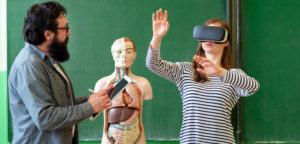
Add Context to Learning with Virtual Reality
Long ago I learned that the best way to tour a city is by bike. A car isolates a tourist from a city, while a bike immerses them in it. A car is a means of racing from tourist destination to tourist destination in as









